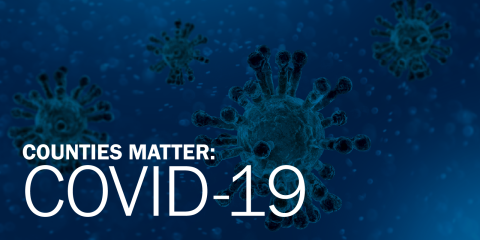COMMUNITY HEALTH
- Counties support 903 hospitals, 824 long-term care facilities and over 1,900 public health departments
- In 26 states, counties are required to provide health care for low-income, uninsured or underinsured residents
- Counties contribute to the non-federal share of Medicaid in 26 states. Of these states, 18 mandate counties to contribute to the non-federal share of Medicaid costs and/or administrative, program, physical health and behavioral health costs
- Local governments, mostly counties, contribute $28 billion to the non-federal share of Medicaid annually
- Mandated county contributions are the highest in New York. Counties in New York and New York City send over $7 billion per year – or $140 million per week – to the state for Medicaid costs
- 75 percent of federal funding used by counites in FY 2014-2016 was for health and human services
|
HUMAN SERVICES
- In at least 10 states that represent at least a third of the U.S. population, counties are responsible for administering federal human service programs, such as Temporary Assistance for Needy Families, Supplemental Nutrition Assistance Program, the child welfare system and the Child Care and Development Block Grant
- Counties invest $58 billion annually in federal, state and local dollars on human services programs
- As unemployment numbers skyrocket, county residents will turn to human services agencies in unprecedented numbers to access safety net programs. At the same time, general revenue funds — which counties often use to supplement federal and state funding for human services programs — are declining dramatically
|
COUNTY MANAGEMENT
- Led by 40,000 county elected officials, counties employ 3.6 million people, or 1 percent of the entire U.S. population
- Every two years during elections, counties fund and oversee more than 100,000 polling places
|
JUSTICE AND PUBLIC SAFETY
- Counties typically operate 911 call centers, county Emergency Operations Centers and emergency planning and response functions
- Counties provide essential public safety services from law enforcement to fire and rescue to even coroners and medical examiners
- Counties operate 91 percent of all local jails, with 11 million total admissions nationally each year, and an average daily jail population of 750,000 inmates
- Counties invest $35 billion annually in 3,041 police and sheriffs’ departments, mostly with local funds
|
TRANSPORTATION
- Counties directly support 34 percent of the nation’s public airports
- Counties support 78 percent of public transit systems that connect people, communities and economies
- Counties own 45 percent of public road miles and 40 percent of the nation’s bridges
- Counties invest $134 billion in the construction of infrastructure, maintenance and operation of public works, such as roads and bridges, wastewater and stormwater systems, county hospitals, courthouses, jails and other public facilities
- To fund and finance infrastructure, counties use a combination of federal, state and local dollars, including user fees and tax-exempt municipal bonds
|


